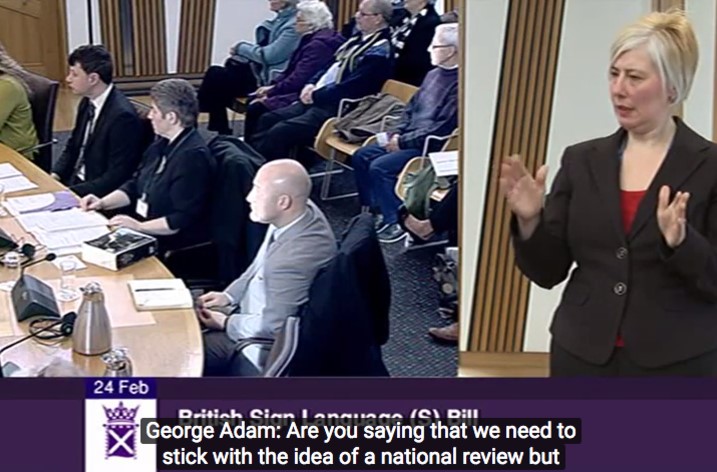Innovation and accessibility
What's the value of accessibility guidelines?
2.10 Applying accessibility guidelines

© Reproduced under the terms of the Open Scottish Parliament Licence V.2
Next, you’ll explore accessibility considerations related to just one aspect of online teaching – the use of multimedia and interactive resources. Most online educators use multimedia resources in their teaching at some point, often as part of a wider interactive learning experience. Such resources can be effective in providing engaging alternatives to text-based content, thereby helping to meet diverse learners’ needs. However, multimedia resources need careful treatment to ensure that their use does not exclude disabled learners.
The screenshot above shows a video from the Scottish Parliament featuring the use of closed captions and a signer – just two of the ways in which multimedia content can be made more accessible.
There is a wide range of online guidance available about how to make multimedia and interactive resources accessible, for example:
- The University of Washington’s Creating Video and Multimedia Products That Are Accessible to People with Sensory Impairments resource - part of their DO-IT project.
- YouTube’s Help pages on adding subtitles and closed captions to videos.
- The Multimedia section from BC Campus’ Accessibility Toolkit
Some of these guidelines may feel very technical and intended for IT developer rather than online educators. However, many educators will work in a team with IT developers and, as an educator, knowing what is technically possible can be useful when designing learning experiences.
Now, spend about 10 minutes reading one of the resources listed above and then share your response to it with your fellow learners in the discussion below. You might want to consider some of the following questions to shape your thoughts:
- To what extent do you think accessibility guidelines work?
- Who do they work best for?
- What else might you need to go with them?
- Why do you think there are so many different guidelines for the same components?
- How might you use the resources above?
- Are there other resources that you have used and can recommend?
Discussion area
© The Open University